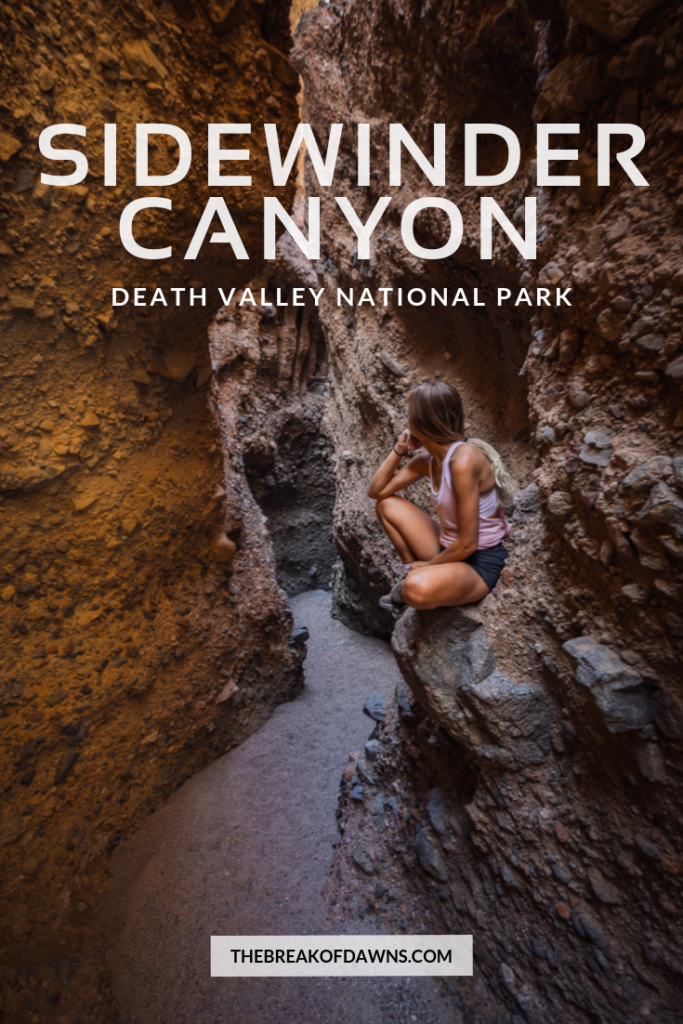
It’s no secret that Death Valley National Park is one of the more otherworldly places on earth. Breaking records for the hottest temps while also displaying geological significances, the uniqueness especially extends to the hikes it offers. Sidewinder Canyon is rich of slot walls rising 20 feet high and tight, dark spaces, supplying you with a heart-pumping trek.
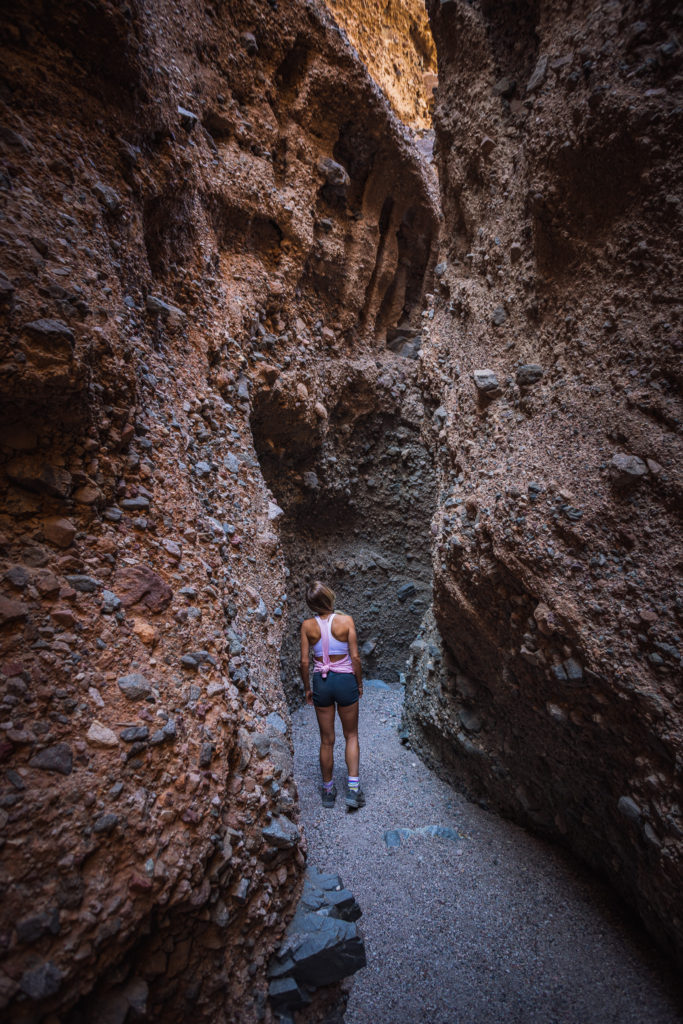
Getting to Sidewinder Canyon
The most convenient entrance into the park in relativity to Sidewinder Canyon is on the southeast side near Shoshone. Take CA 178 to Ashford Junction and the canyon is about a 20 minute drive (13 miles) north from there. The other route is south of Furnace Creek on CA 178, 23 minutes (15 miles) south of Badwater Basin.
*UPDATE: As of 2019, there is a sign for Sidewinder Canyon around mile marker 32 and a parking area at the road’s end.
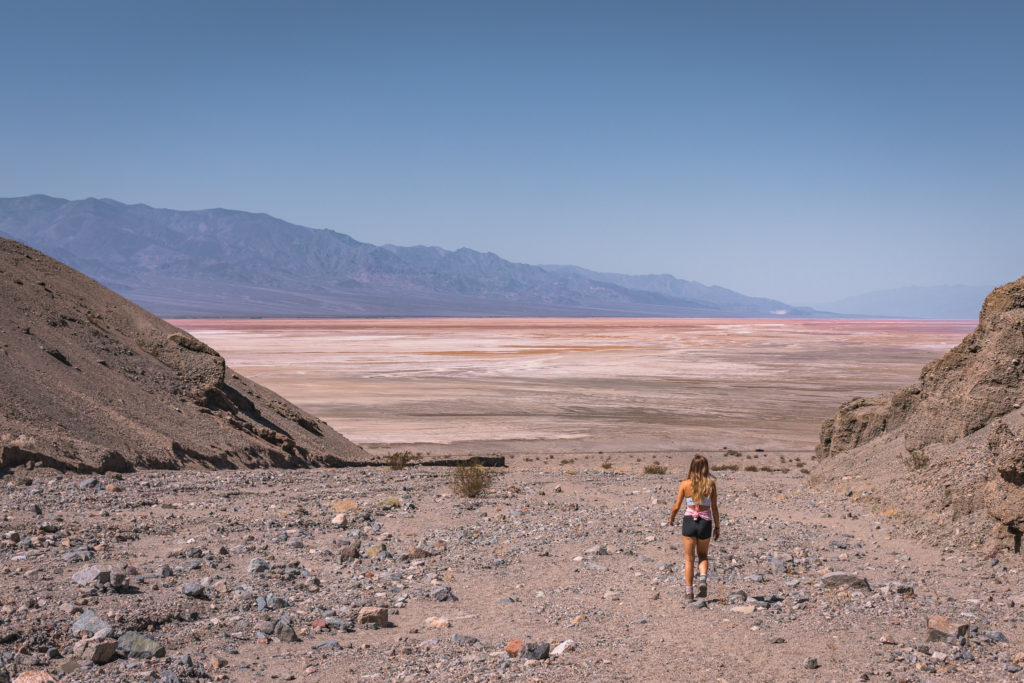
Sidewinder Canyon Trail Details
Distance: 4.3 Miles
Type: Out & Back
Elevation Gain: +1,062 Feet
The Sidewinder Canyon Trail is a 4.3 mile gravel hike that explores some of the most incredible slot canyons. I’ve hiked Sidewinder twice now and the first time it took us around 4 hours, the second was around 6 since we explored deeper in. Sidewinder could be considered physically demanding since it requires climbing and squeezing into tight spaces. Because it’s in a somewhat remote area of Death Valley, the trail is lightly trafficked.
There are essentially 3 different slot canyons to discover on this hike. Other tributaries spur off of the main slots so feel free to climb and scramble through as much as you wish.
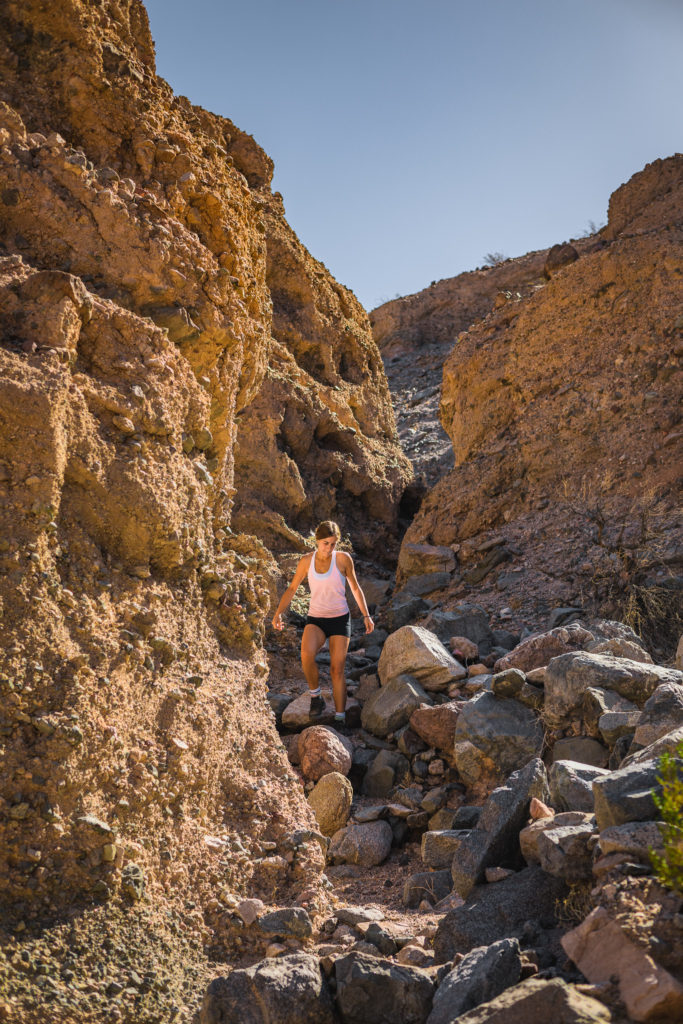
What to Bring for Sidewinder Canyon
Since hiking Sidewinder Canyon requires some crawling, squeezing and climbing into tight places, dress accordingly with proper attire to keep you protected. If you plan on climbing higher at the back of the slots, necessary gear like a helmet should be worn.
In some areas of the canyons, the walls close in above, blocking out almost all sunlight. Special equipment like a headlamp or flashlight is recommended for the hike and don’t forget those back-up batteries!
As with every hike (and especially in the heat of Death Valley), be sure to bring along those backcountry essentials. Water, snacks and sunscreen are just a few things you’ll definitely need while in Sidewinder Canyon.
Read More: The 8 Backcountry Essentials You Shouldn’t Hike Without
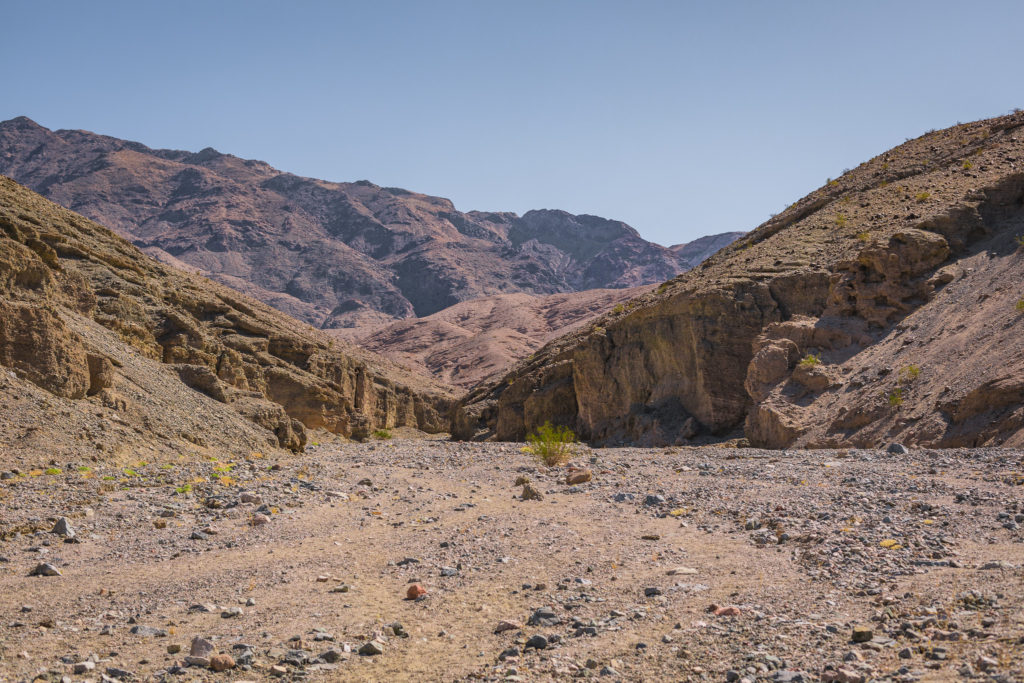
Finding the Sidewinder Canyon Trail
Not going to lie, finding the actual trailhead for Sidewinder Canyon is pretty difficult but that’s why I’m here for some guidance!
Once parked in the designated area, you’ll see a faint trail in the ground heading south, hinting at the correct direction. The trailhead for Sidewinder Canyon is actually where the eastern set of mountains meet the southern hills. Walk through the rocky landscape towards that corner and it will open up into a wide canyon.
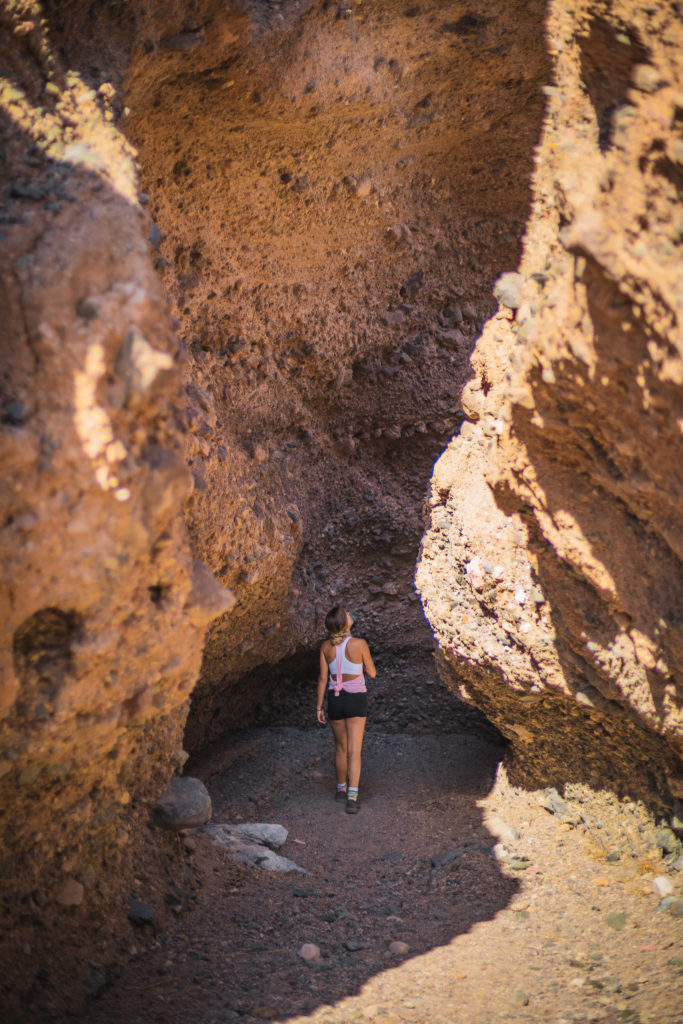
Slot #1
From the mouth of the trailhead at the canyon, it’s about 0.6 miles uphill to the first slot. The canyon begins to widen and, looking to the right, you can see a spur trail leading to a large slit covered with boulders. Looking against the back wall on the left side, a creviced opening appears below the stack of boulders. This is your entrance to slot 1.
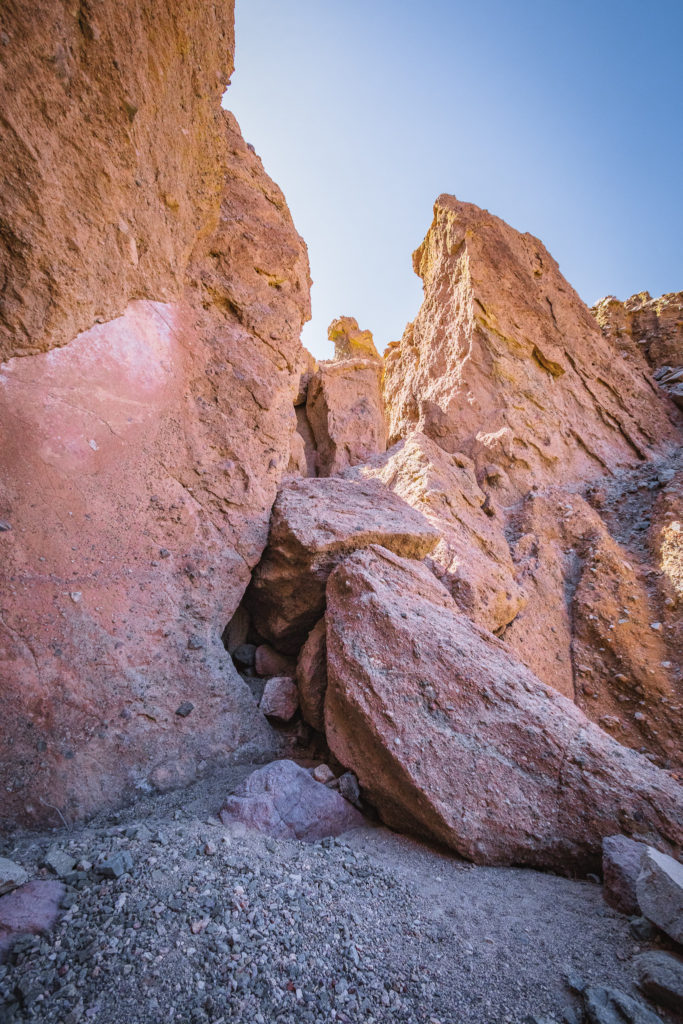
Entering Slot #1
Entering slot 1 will require some squeezing and scrambling. I was pretty skeptical that this was the right way to go but, after coming through the slit and up and over the boulder, the canyon completely opens up to another world.
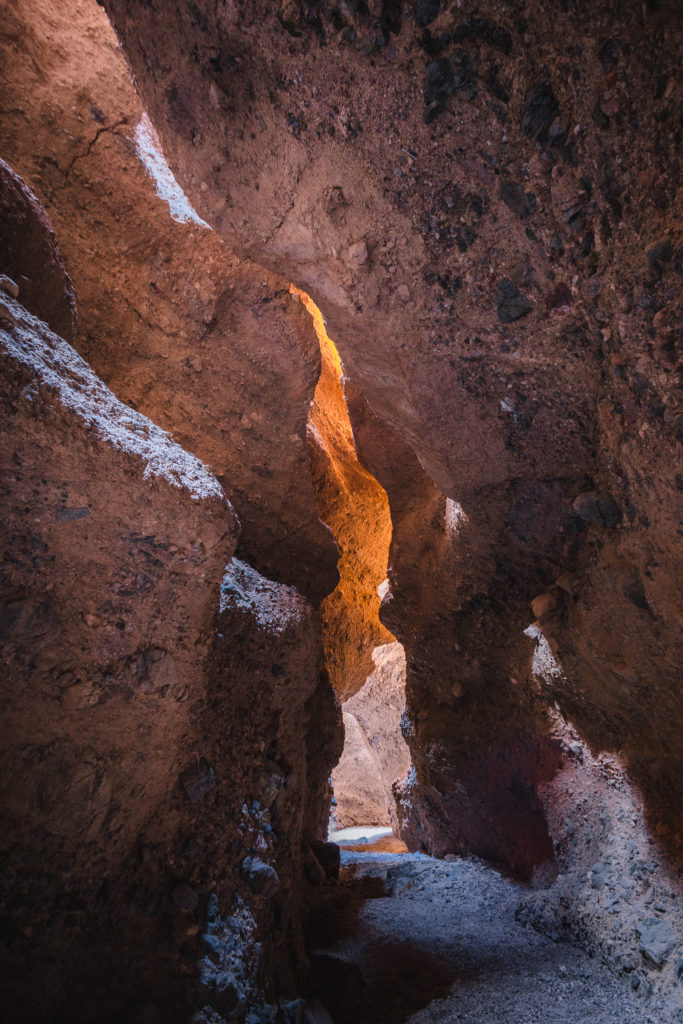
Exploring Slot #1
Once that climbing and squeezing is over with, slot 1 is pretty easy to navigate through. The initial area opens up, showing the sky above through a jagged frame and displaying colorful rocks shining in the sun.
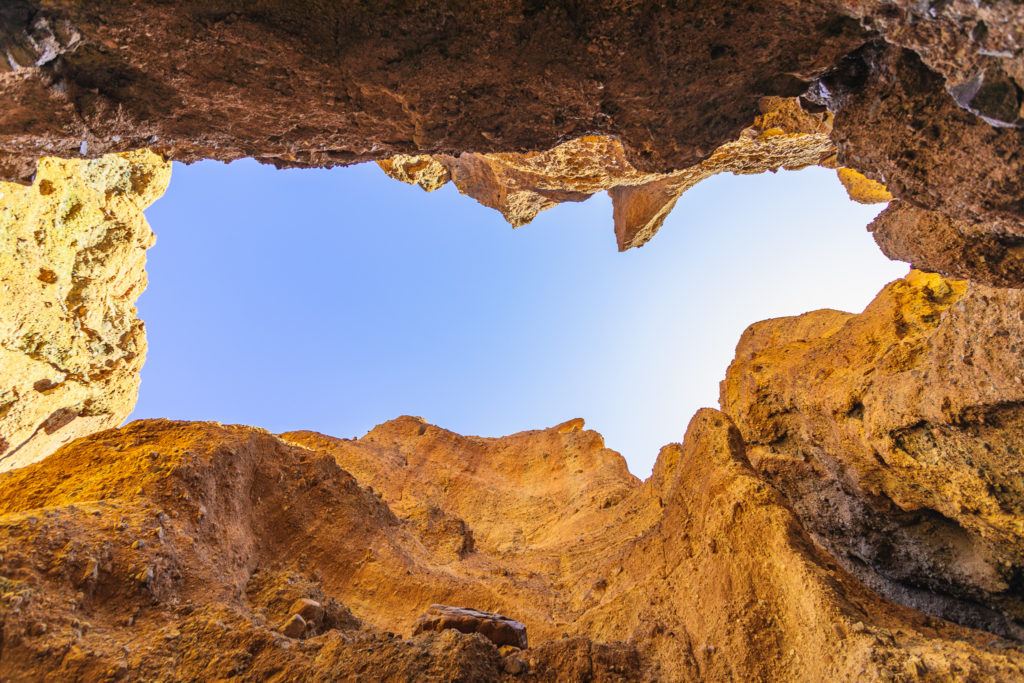
The total length of slot 1 is only about 0.1 miles until the canyon walls close in completely. At this point, you’ll definitely need a headlamp as you come to the back of a dark passageway. That’s your cue to either rock climb up and over the wall (too difficult for me!) or to exit out on the same route you came in.
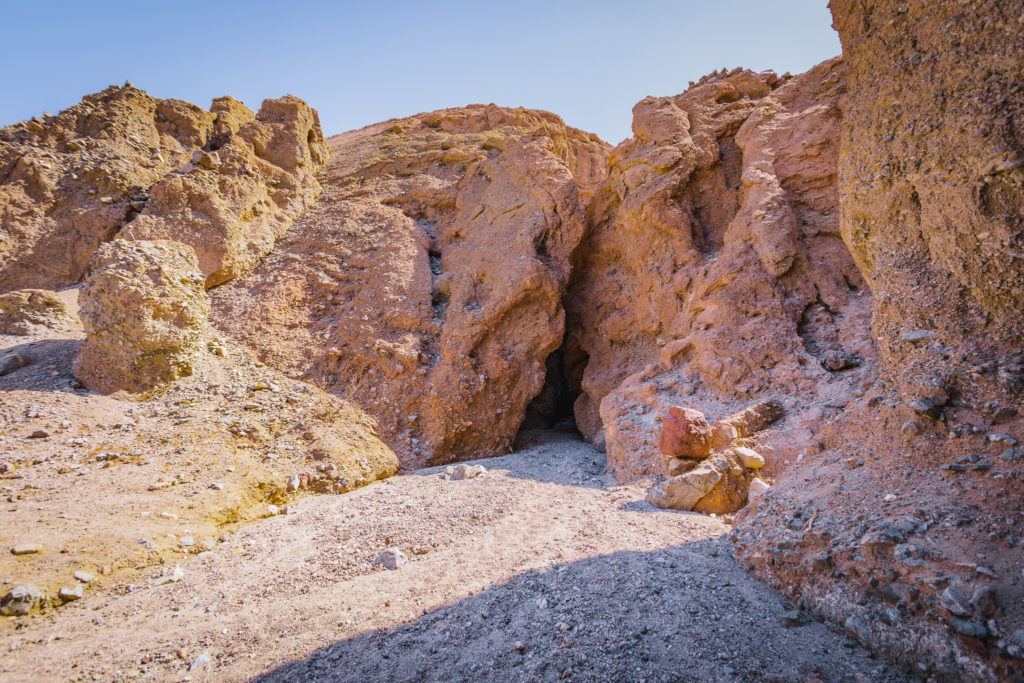
Slot #2
After retuning to the main trailhead, take a right and head back up the canyon for about 0.1 miles. The more obvious visible entrance to the second slot canyon is on the wall to the right.
Exploring Slot #2
While the entrance is easier than slot 1, exploring through slot 2 requires a bit more climbing. The pathway of the canyon beautifully eases around the walls, displaying the effects of ancient flash floods.
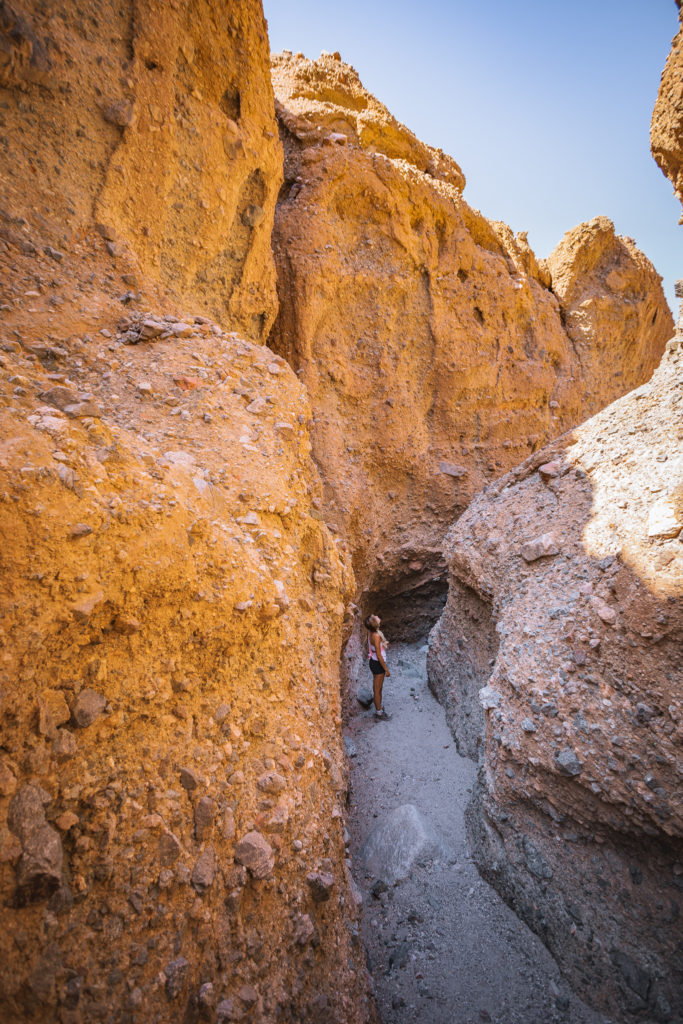
The majority of people who hike this trail only explore for about a half mile, ending at the point where a climb 6 to 8 feet high over rugged boulders is required. If you decide to make the scramble like we did, it’s totally worth it.
The sunlight begins to teasingly peek through the cracks of the walls. Hiking a bit further, the top of the canyon opens up and displays the bright blue sky, a welcoming sight after roaming in the dark.
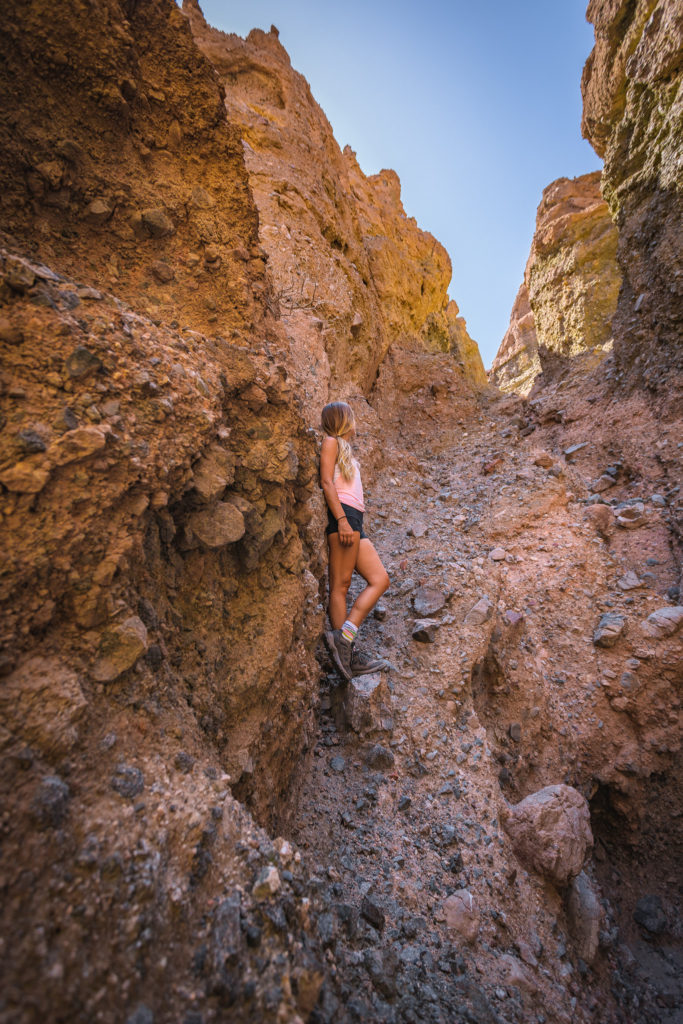
The canyon widens more after most of the climbing is done. We hiked in about a mile but many spur trails exist back in this part of the canyon that can make for a longer hike. These trails are very rocky and unstable so take precautions when exploring on.
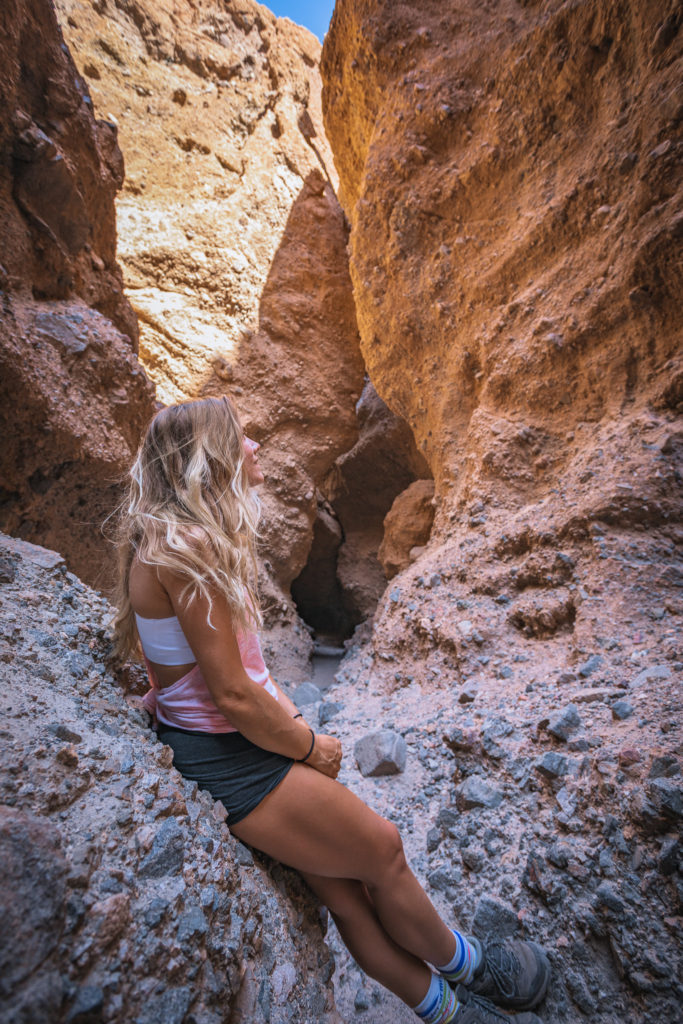
Slot #3
After retreating back to the main canyon, turn right and hike about 0.25 miles to find the entrance of slot #3 on the right.
Exploring Slot #3
I think the formations of the rock walls back in slot 3 were the most spectacular of all three canyons. The exploration of this canyon requires more crawling and scrambling than the first two and has no official end so explore as long as you wish!
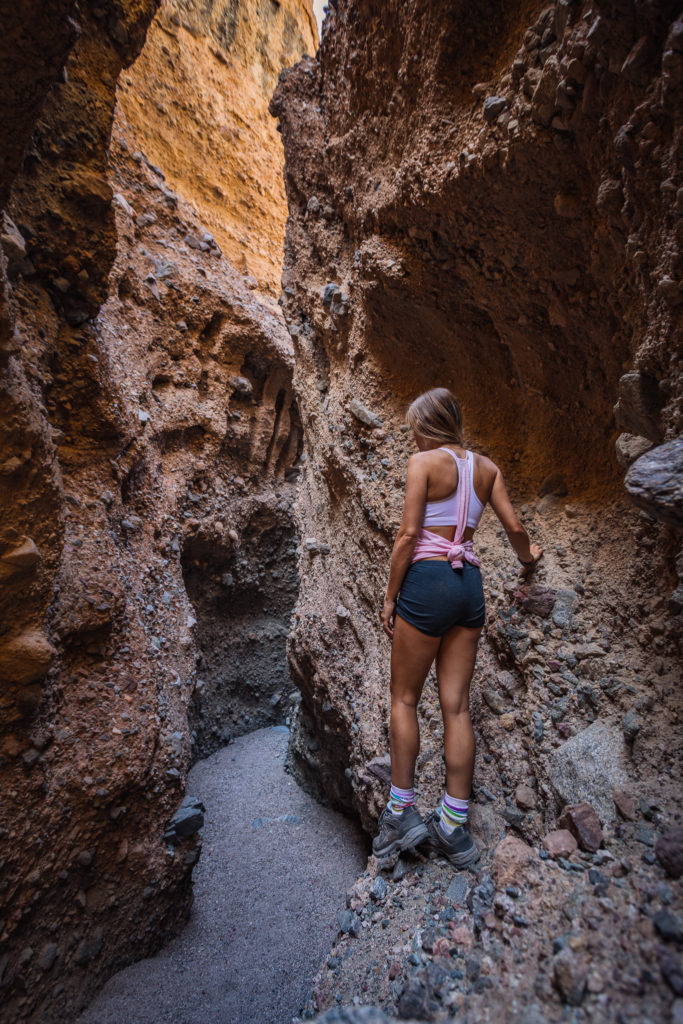
Read More National Park Posts HereBefore heading into the backcountry, it’s imperative that you’re familiar with the “Leave No Trace” principles.
Read More: Leave No Trace: The 7 Rules of the Backcountry
Learn more about Leave No Trace on their website here.
Like This Post? Pin It!
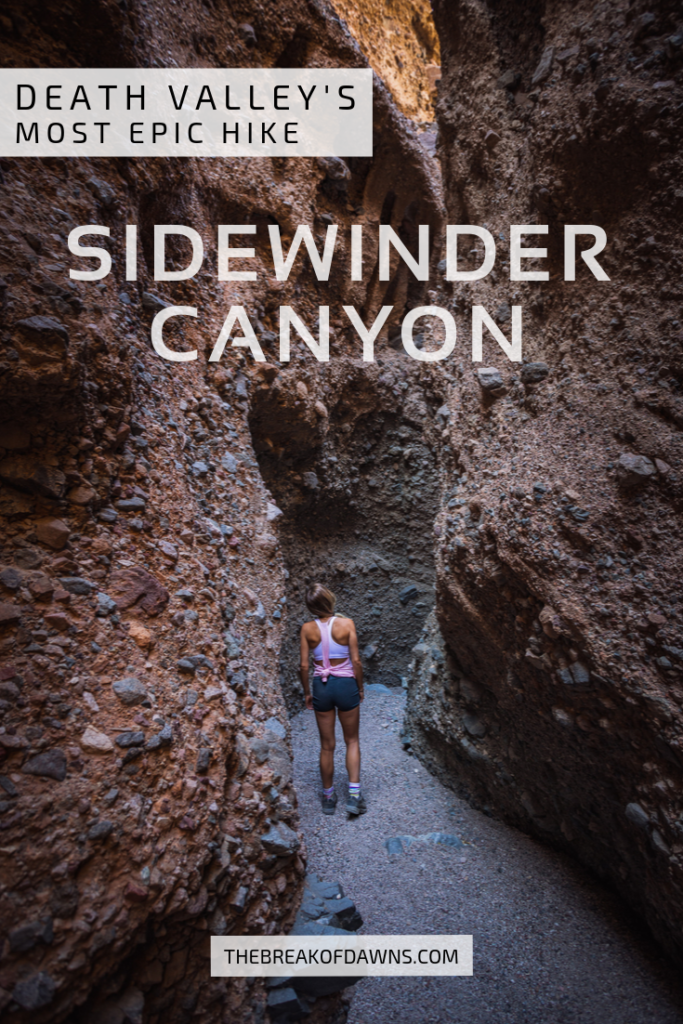
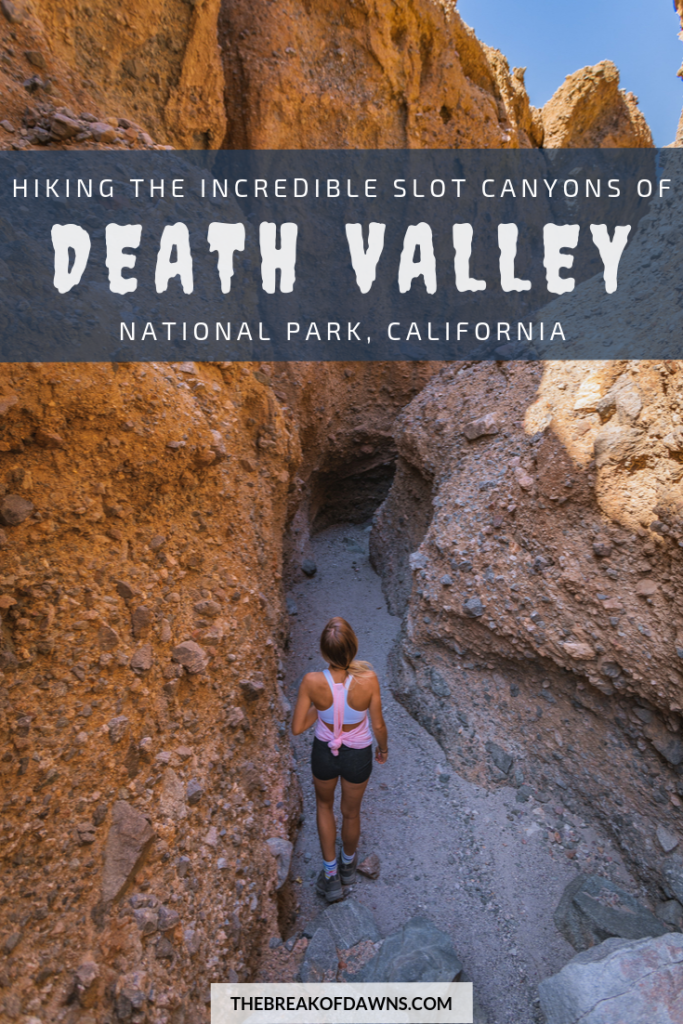
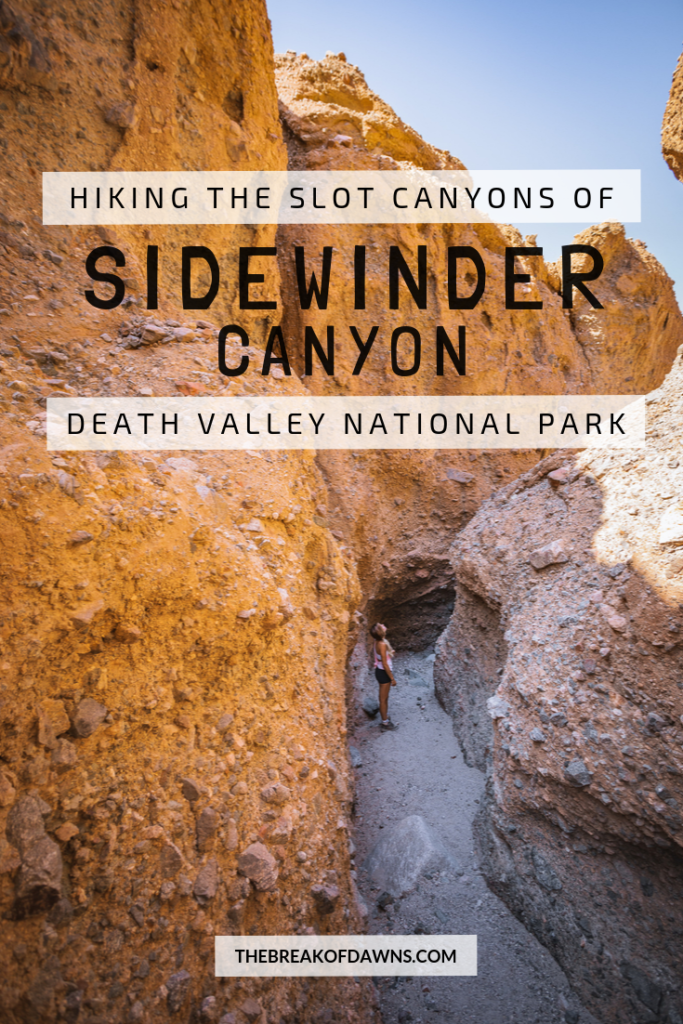

| This post contains affiliate links. At no extra cost to you, if you purchase one of these products I may receive a small commission. This helps me maintain my blog as a free space to you. Check out my Disclaimer for more info.


[…] mining ghost town of Rhyolite, Mesquite Flat Sand Dunes, and Sidewinder Canyon are other amazing places to see in Death Valley and Zabriskie Point and Dante’s View fall on […]